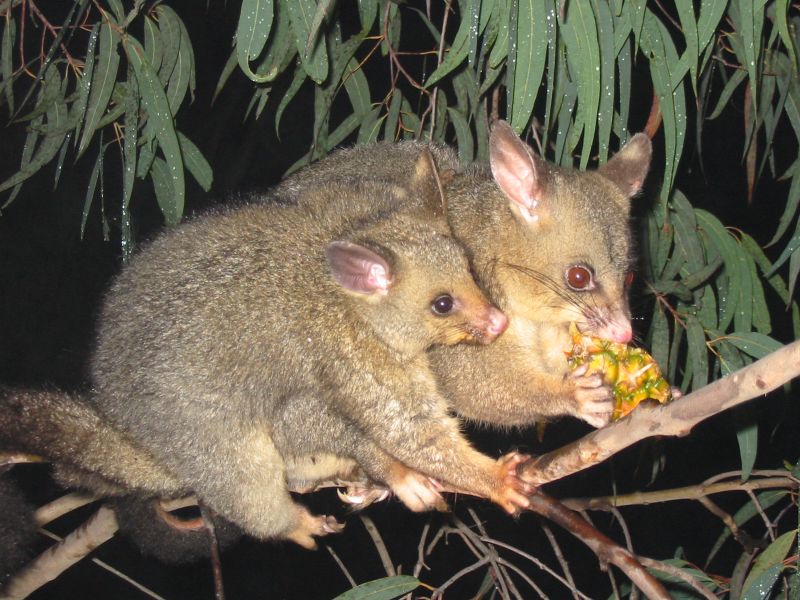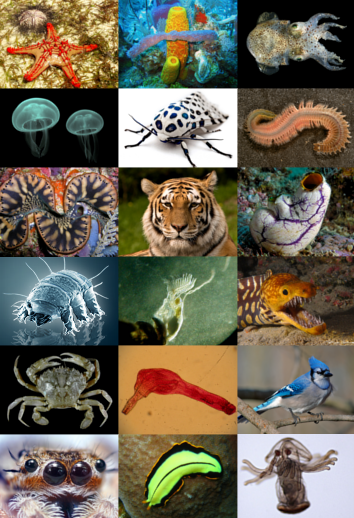|
Vacant Niche
The issue of what exactly defines a vacant niche, also known as empty niche, and whether they exist in ecosystems is controversial. The subject is intimately tied into a much broader debate on whether ecosystems can reach equilibrium, where they could theoretically become maximally saturated with species. Given that saturation is a measure of the number of species per resource axis per ecosystem, the question becomes: is it useful to define unused resource clusters as niche 'vacancies'? History of the concept Whether vacant niches are permissible has been both confirmed and denied as the definition of a niche has changed over time. Within the pre-Hutchinsonian niche frameworks of Grinnell (1917) and Elton (1927) vacant niches were allowable. In the framework of Grinnell, the species niche was largely equivalent to its habitat, such that a niche vacancy could be looked upon as a habitat vacancy. The Eltonian framework considered the niche to be equivalent to a species position in a t ... [...More Info...] [...Related Items...] OR: [Wikipedia] [Google] [Baidu] |
Ecological Niche
In ecology, a niche is the match of a species to a specific environmental condition. Three variants of ecological niche are described by It describes how an organism or population responds to the distribution of resources and competitors (for example, by growing when resources are abundant, and when predators, parasites and pathogens are scarce) and how it in turn alters those same factors (for example, limiting access to resources by other organisms, acting as a food source for predators and a consumer of prey). "The type and number of variables comprising the dimensions of an environmental niche vary from one species to another ndthe relative importance of particular environmental variables for a species may vary according to the geographic and biotic contexts". See also Chapter 2: Concepts of niches, pp. 7 ''ff'' A Grinnellian niche is determined by the habitat in which a species lives and its accompanying behavioral adaptations. An Eltonian niche emphasizes that a spec ... [...More Info...] [...Related Items...] OR: [Wikipedia] [Google] [Baidu] |
Fitness Landscape ...
Fitness may refer to: * Physical fitness, a state of health and well-being of the body * Fitness (biology), an individual's ability to propagate its genes * Fitness (cereal), a brand of breakfast cereals and granola bars * ''Fitness'' (magazine), a women's magazine, focusing on health and exercise * Fitness and figure competition, a form of physique training, related to bodybuilding * Fitness approximation, a method of function optimization evolutionary computation or artificial evolution methodologies * Fitness function, a particular type of objective function in mathematics and computer science * "Fitness", a 2018 song by Lizzo See also * FitNesse, a web server, a wiki, and a software testing tool *Survival of the fittest "Survival of the fittest" is a phrase that originated from Darwinian evolutionary theory as a way of describing the mechanism of natural selection. The biological concept of fitness is defined as reproductive success. In Darwinian terms, th ... [...More Info...] [...Related Items...] OR: [Wikipedia] [Google] [Baidu] |
Niche Segregation
Species use restricted ecological niches, and the niches of all species are segregated, often with much overlap, by the use of different habitats, different geographic areas and seasons, and different food resources, to mention only a few of the many niche dimensions. The causes of niche restriction and segregation are important problems in evolutionary ecology. Background Two ecological paradigms deal with the problem. The first paradigm predominates in what may be called “classical” ecology. It assumes that niche space is largely saturated with individuals and species, leading to strong competition. Niches are restricted because “neighbouring” species, i.e., species with similar ecological characteristics such as similar habitats or food preferences, prevent expansion into other niches or even narrow niches down. This continual struggle for existence is an important assumption of natural selection introduced by Darwin as an explanation for evolution. The other paradigm ... [...More Info...] [...Related Items...] OR: [Wikipedia] [Google] [Baidu] |
Effective Evolutionary Time
The hypothesis of effective evolutionary timeK. Rohde: Latitudinal gradients in species diversity: the search for the primary cause, Oikos, 65, 514-527,1992. attempts to explain gradients, in particular latitudinal gradients, in species diversity. It was originally named "time hypothesis".K. Rohde: Latitudinal gradients in species diversity and their causes. I. A review of the hypotheses explaining the gradients. Biologisches Zentralblatt 97, 393-403, 1978a.K. Rohde: Latitudinal gradients in species diversity and their causes. II. Marine parasitological evidence for a time hypothesis. Biologisches Zentralblatt 97, 405-418, 1978b. Background Low (warm) latitudes contain significantly more species than high (cold) latitudes. This has been shown for many animal and plant groups, although exceptions exist (see latitudinal gradients in species diversity). An example of an exception is helminths of marine mammals, which have the greatest diversity in northern temperate seas, possibly bec ... [...More Info...] [...Related Items...] OR: [Wikipedia] [Google] [Baidu] |
SES Values
SES, S.E.S., Ses and similar variants can refere to: Business and economics * Socioeconomic status * Scottish Economic Society, a learned society in Scotland * SES, callsign of the TV station SES/RTS (Mount Gambier, South Australia) * SES S.A., a satellite owner and operator * Single Economic Space or Eurasian Economic Space, a project of economical integration of five post-Soviet states: Belarus, Kazakhstan, Russia, Armenia, and Kyrgyzstan * Single European Sky * Stock Exchange of Singapore * Subud Enterprise Services Science and technology * Science and Engineering South, a consortium of 6 research-intensive public universities in the Southeast of England, UK * Sedimentation Enhancing Strategy, an environmental management project for land-building in river deltas * Service Engine Soon, a warning message on modern automobiles * Service Evaluation System, an Operations Support System used by telephone companies * ''Ses Hübner'', a fungus moth genus nowadays synonymized with ... [...More Info...] [...Related Items...] OR: [Wikipedia] [Google] [Baidu] |
Baupläne
A body plan, ( ), or ground plan is a set of morphological features common to many members of a phylum of animals. The vertebrates share one body plan, while invertebrates have many. This term, usually applied to animals, envisages a "blueprint" encompassing aspects such as symmetry, layers, segmentation, nerve, limb, and gut disposition. Evolutionary developmental biology seeks to explain the origins of diverse body plans. Body plans have historically been considered to have evolved in a flash in the Ediacaran biota; filling the Cambrian explosion with the results, and a more nuanced understanding of animal evolution suggests gradual development of body plans throughout the early Palaeozoic. Recent studies in animals and plants started to investigate whether evolutionary constraints on body plan structures can explain the presence of developmental constraints during embryogenesis such as the phenomenon referred to as phylotypic stage. History Among the pioneering zoologists ... [...More Info...] [...Related Items...] OR: [Wikipedia] [Google] [Baidu] |
Holocene
The Holocene ( ) is the current geological epoch. It began approximately 11,650 cal years Before Present (), after the Last Glacial Period, which concluded with the Holocene glacial retreat. The Holocene and the preceding Pleistocene together form the Quaternary period. The Holocene has been identified with the current warm period, known as MIS 1. It is considered by some to be an interglacial period within the Pleistocene Epoch, called the Flandrian interglacial.Oxford University Press – Why Geography Matters: More Than Ever (book) – "Holocene Humanity" section https://books.google.com/books?id=7P0_sWIcBNsC The Holocene corresponds with the rapid proliferation, growth and impacts of the human species worldwide, including all of its written history, technological revolutions, development of major civilizations, and overall significant transition towards urban living in the present. The human impact on modern-era Earth and its ecosystems may be considered of global si ... [...More Info...] [...Related Items...] OR: [Wikipedia] [Google] [Baidu] |
Cambrian
The Cambrian Period ( ; sometimes symbolized C with bar, Ꞓ) was the first geological period of the Paleozoic Era, and of the Phanerozoic Eon. The Cambrian lasted 53.4 million years from the end of the preceding Ediacaran Period 538.8 million years ago (mya) to the beginning of the Ordovician Period mya. Its subdivisions, and its base, are somewhat in flux. The period was established as "Cambrian series" by Adam Sedgwick, who named it after Cambria, the Latin name for 'Cymru' (Wales), where Britain's Cambrian rocks are best exposed. Sedgwick identified the layer as part of his task, along with Roderick Murchison, to subdivide the large "Transition Series", although the two geologists disagreed for a while on the appropriate categorization. The Cambrian is unique in its unusually high proportion of sedimentary deposits, sites of exceptional preservation where "soft" parts of organisms are preserved as well as their more resistant shells. As a result, our understanding of the Ca ... [...More Info...] [...Related Items...] OR: [Wikipedia] [Google] [Baidu] |
Benthos
Benthos (), also known as benthon, is the community of organisms that live on, in, or near the bottom of a sea, river, lake, or stream, also known as the benthic zone.Benthos from the Census of Antarctic Marine Life website This community lives in or near marine or freshwater sedimentary environments, from s along the , out to the , and t ... [...More Info...] [...Related Items...] OR: [Wikipedia] [Google] [Baidu] |
Parasite
Parasitism is a close relationship between species, where one organism, the parasite, lives on or inside another organism, the host, causing it some harm, and is adapted structurally to this way of life. The entomologist E. O. Wilson has characterised parasites as "predators that eat prey in units of less than one". Parasites include single-celled protozoans such as the agents of malaria, sleeping sickness, and amoebic dysentery; animals such as hookworms, lice, mosquitoes, and vampire bats; fungi such as Armillaria mellea, honey fungus and the agents of ringworm; and plants such as mistletoe, dodder, and the Orobanchaceae, broomrapes. There are six major parasitic Behavioral ecology#Evolutionarily stable strategy, strategies of exploitation of animal hosts, namely parasitic castration, directly transmitted parasitism (by contact), wikt:trophic, trophicallytransmitted parasitism (by being eaten), Disease vector, vector-transmitted parasitism, parasitoidism, and micropreda ... [...More Info...] [...Related Items...] OR: [Wikipedia] [Google] [Baidu] |
Ecosystems
An ecosystem (or ecological system) consists of all the organisms and the physical environment with which they interact. These biotic and abiotic components are linked together through nutrient cycles and energy flows. Energy enters the system through photosynthesis and is incorporated into plant tissue. By feeding on plants and on one another, animals play an important role in the movement of matter and energy through the system. They also influence the quantity of plant and microbial biomass present. By breaking down dead organic matter, decomposers release carbon back to the atmosphere and facilitate nutrient cycling by converting nutrients stored in dead biomass back to a form that can be readily used by plants and microbes. Ecosystems are controlled by external and internal factors. External factors such as climate, parent material which forms the soil and topography, control the overall structure of an ecosystem but are not themselves influenced by the ecosystem. Interna ... [...More Info...] [...Related Items...] OR: [Wikipedia] [Google] [Baidu] |
Pteridium Aquilinum
''Pteridium aquilinum'' (bracken, brake or common bracken), also known as eagle fern, is a species of fern occurring in temperate and subtropical regions in both hemispheres. Originally native to Eurasia and North America, the extreme lightness of its spores has led to it achieving a cosmopolitan distribution. Etymology Common bracken was first described as ''Pteris aquilina'' by Carl Linnaeus, in Volume 2 of his ''Species Plantarum'' in 1753. The origin of the specific epithet derived from the Latin ''aquila'' "eagle". In the reprint of the ''Flora Suecica'' in 1755, Linnaeus explains that the name refers to the image of an eagle seen in the transverse section of the root. In spite of this, the opinion has been forwarded that the name pertains to the shape of the mature fronds appearing akin to an eagle's wing. However, medieval scholars, including Erasmus, thought the pattern of the fibres seen in a transverse section of the stipe resembled a double-headed eagle or oak tree. Ta ... [...More Info...] [...Related Items...] OR: [Wikipedia] [Google] [Baidu] |








